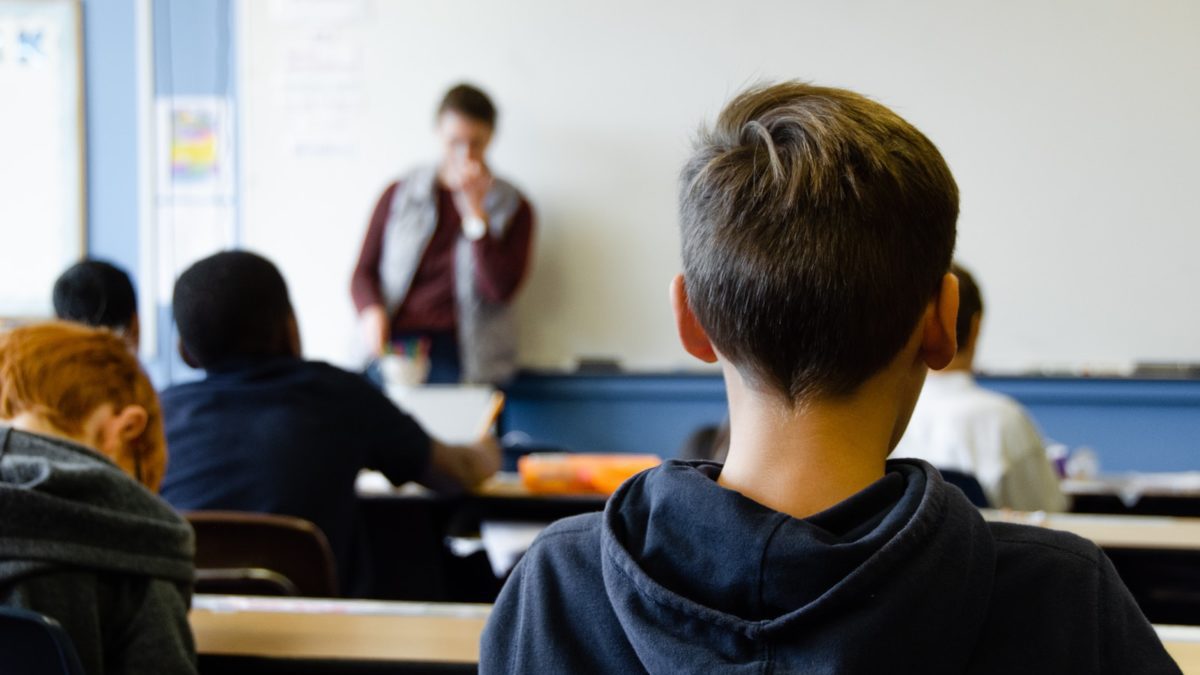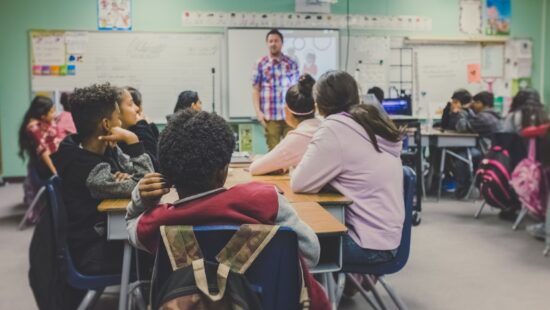Community
Audit: Utah keeps teachers overall, but first 5 years tricky

Utah teachers. Photo: Taylor Wilcox
SALT LAKE CITY — Tiffany Hatch isn’t quite a unicorn, but a new state audit suggests she’s done something nearly half of her teaching cohort hasn’t: stuck it out in the profession.
While the audit shows that in 2017 Utah teacher retention was the highest nationally, the turnover of Utah teachers during their first five years on the job exceeds 40%, the Deseret News reported.
“This is higher than national averages, which range between 17% and 46%,” said the audit released recently by the Office of Legislative Auditor General.
Hatch is in her sixth year of teaching after graduating from Weber State University. The mother of five children said she decided to become a teacher one morning after dropping her kids off at school.
It was a rainy day, she recalled. After telling her kids goodbye and that she loved them, she lingered to watch them walk into their school.
“I thought, ‘I hope those teachers are being so good to my kids because they will be with them way more today than I will,’” she said.
“I thought, ‘I hope they don’t just teach my children but build up their self-esteem.’ That’s what I wish for as a mom, and that’s what I could do if I were a teacher.”
At the time, Hatch didn’t have an undergraduate degree, so she decided to apply for a job in a school office.
“A principal who was in one of my interviews knew that a school was looking for a teacher assistant and said, ‘Oh, she would be really good,’” Hatch said.
She got the job, which entailed heading up the school’s before-school program. She’s also served as a kindergarten tutor and assisted elementary school teachers that taught fifth and second grades.
“In doing that, I just realized how much I loved it,” she said.
As Hatch explored university teaching programs, she learned about Weber State University’s Teacher Assistant Pathway to Teaching program, or TAPT for short.
The program provides teacher assistants financial support and mentoring to become fully licensed teachers. It is supported with state funds but also by private donors and businesses.
Now a first-grade teacher at South Clearfield Elementary School, Hatch calls the program “a gift on a silver platter.”
The TAPT program covered her tuition and provided academic and emotional support, which she described as a “win-win.”
“They would bring in people to talk about classroom management, or they would bring in people to talk about ethics or different people from the university, and it was just awesome. So I think that gives a huge leg up to anybody,” she said.
The TAPT program helps existing school employees advance in their careers. It focuses on a population of people who already work in schools and are familiar with classroom conditions.
Kristin Hadley, dean of Weber State’s Moyes College of Education, said the participants’ experience working in schools contributes to the program’s success. “Ninety-five percent of those folks who graduated from that program are still teaching,” she said.
One factor is “they don’t get any of this shock of, ‘Oh, I had no idea it was like that.’ They know exactly what teaching is because they’re working in the schools, and then we support them through their education,” she said.
According to the recent legislative audit, where a student completes a teacher education program in Utah also factors into teacher retention.
For the five years reviewed by the auditors — 2017-2021 — Weber State University graduates had the lowest teacher turnover at 36%.
Hadley said Weber State graduates’ lower turnover rate might also be attributed to how the university delivers its teaching program.
“Our program is very embedded in our local school districts. We have students out in the field early and often working with students at a variety of schools,” Hadley said, such as Title I schools or schools where students’ families have more personal resources. Title I funds assist schools in meeting the educational needs of students living near or at poverty levels.
Weber State’s College of Education, in a partnership with Davis School District, teaches some courses at an elementary school, and students can practice what they’re learning in the classrooms “so they get a much richer experience,” Hadley said.
According to the audit, the University of Utah and Dixie State University each had a 41% turnover, followed by Utah Valley University at 45%, Southern Utah University at 48%, and Utah State University at 49%.
Turnover among students educated at private, nonprofit universities Brigham Young University and Western Governors University was 75% and 81%, respectively.
The audit notes differences in teacher turnover among the universities “may be the result of different student populations. Furthermore, proportional differences of out-of-state students (who may go on to work out of state), student demographics and backgrounds and career paths may not be evenly distributed among each university.”
The audit shows that teachers who graduate from traditional university educator preparation programs or complete an alternative program approved by the Utah State Board of Education have a lower turnover than people who enter the profession via nonprofessional licensure.
“Turnover rates for the 2015-16 cohort show a difference of nearly 20 percentage points between professionally licensed and nonprofessionally licensed teachers,” the audit states.
Nonprofessionally licensed teachers have entered the teaching workforce via other pathways such as associate or local education agency-specific licenses.
To obtain an associates’ license, a candidate must pass the State School Board’s background check and ethics review. They must either have earned a bachelor’s degree or are seeking the degree. They must demonstrate knowledge of what they will be teaching and complete the state board’s pedagogical modules.
An LEA license requires a background check and ethics review. The district school board or charter school board must apply on behalf of the educator. The school or district must create a personalized plan for educator support.
The audit notes that “Utah’s teacher workforce is increasingly composed of higher proportions of these nonprofessionally licensed teachers.”
Heidi Matthews, president of the Utah Education Association, said a growing reliance on teachers who were not trained in educator preparation programs is concerning.
“It means that they’re learning on the job, and we have to think about what impact that has on the educators themselves but on our own student learning,” she said.
Matthews said lawmakers have made strides in recent years to increase teacher pay, but many educators report struggling with stress and workload, issues that were made worse by the COVID-19 pandemic.
“Stress is a cumulative result of a wide variety of issues that have many of our educators at the breaking point. When you add into that the attacks on our professional integrity, about discussions about teaching race in our schools, teaching honest and accurate history, not making anyone uncomfortable, creating limitations on creating welcoming classrooms, and curriculum transparency, it adds up,” she said.
State Superintendent of Public Instruction Sydnee Dickson said educators are cognizant of lawmakers’ efforts to increase education funding and support initiatives that provide schools with needed support.
During the Utah Legislature’s last general session, lawmakers appropriated more than $6 billion to public education from state, federal, and local sources, which they described as “historic.”
The base budget included more than $400 million in new education funding, a 6% increase to the value of the weighted pupil unit, which is the building block of education funding in Utah, and funding for enrollment growth and inflation.
Dickson said lawmakers also need to be mindful of the impact of their policy decisions, particularly as “the divisiveness in the country is playing out in our classrooms as well,” she said.
As the State School Board establishes policies and rules, “I’m always thinking how does this impact the classroom? So it’s this duality of the arm around our teachers but then putting more on their plate and saying ‘carry more,’” she said.
At South Clearfield Elementary School, Hatch said she continues to refine her teaching practice and mentor students and teachers new to the profession. She said she is compelled to give back because she benefited immensely from veteran educators who guided her.
Hatch said she believes that state and local education leaders are mindful of teacher turnover and continue to improve teacher pay and make other efforts to support their efforts, such as teacher supply funding and the bonus granted to educators for their hard work during the pandemic.
Sometimes, it’s the small kindnesses that pull a teacher through challenging times.
Two years ago, Hatch was in the middle of a lesson when she saw her principal and a group of people “in suits” filter into the back of her classroom.
“So I’m teaching, teaching, teaching. They’re standing in the back, and as they file out, Sydnee Dickson came over to me in front of the class and said, ‘Thank you for being a teacher.’
“Of course, my principal follows right up, and it’s like, ’Mrs. Hatch, this is Sydnee Dixon, the state superintendent.
“And I’m like, ‘Oh, my gosh, I know. I’m going to write about this in my journal.’ I mean, it’s just so kind. Who does that? I mean, talk about leadership. Who does that?”


















